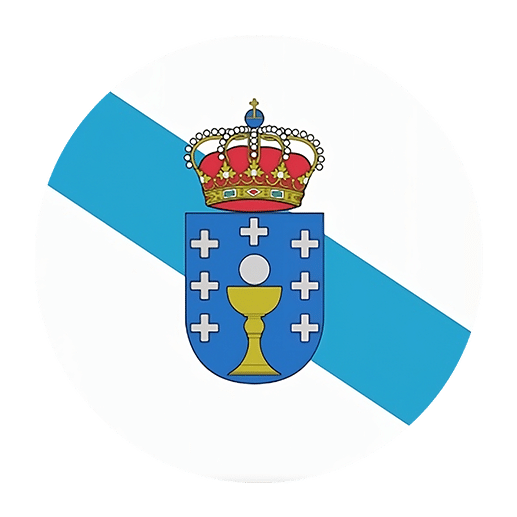Galician, a language spoken in the autonomous community of Galicia in northwestern Spain, is a fascinating Romance language with unique characteristics. One of the essential aspects of mastering Galician is understanding how to express possession. In this article, we will delve into possessive nouns in Galician, exploring their forms, usage, and nuances to help English speakers grasp this critical grammatical concept.
Understanding Possessive Nouns in Galician
Possessive nouns in Galician, much like in English, indicate ownership or a relationship between a possessor and the possessed item. However, the structure and usage of possessive nouns in Galician have unique features that learners must comprehend. To begin with, let’s explore the basic possessive pronouns in Galician.
Basic Possessive Pronouns
In Galician, possessive pronouns agree in gender (masculine or feminine) and number (singular or plural) with the noun they modify. Here are the basic possessive pronouns:
Singular:
– Meu (masculine) / Miña (feminine) – My
– Teu (masculine) / Túa (feminine) – Your (informal)
– Seu (masculine) / Súa (feminine) – His/Her/Its
Plural:
– Meus (masculine) / Miñas (feminine) – My
– Teus (masculine) / Túas (feminine) – Your (informal)
– Seus (masculine) / Súas (feminine) – His/Her/Its
When we refer to possessive nouns in the first and second person plural, we use:
First Person Plural:
– Noso (masculine) / Nosa (feminine) – Our
– Nosos (masculine) / Nosas (feminine) – Our
Second Person Plural:
– Voso (masculine) / Vosa (feminine) – Your (informal, plural)
– Vosos (masculine) / Vosas (feminine) – Your (informal, plural)
Third Person Plural:
– Seu (masculine) / Súa (feminine) – Their
– Seus (masculine) / Súas (feminine) – Their
Usage of Possessive Pronouns
In Galician, possessive pronouns are generally placed before the noun they modify. For example:
– Meu libro (My book)
– Túa casa (Your house)
– Súas xoias (Her jewels)
However, unlike English, where possessive pronouns always precede the noun, Galician can sometimes place the possessive pronoun after the noun, particularly in poetic or formal contexts. For instance:
– O libro meu (The book of mine)
– A casa túa (The house of yours)
It’s essential to note that the placement of possessive pronouns after the noun tends to add emphasis or a stylistic touch rather than being a common everyday usage.
Possessive Adjectives
Possessive adjectives in Galician function similarly to possessive pronouns but require a different form. They are placed before the noun and agree in gender and number with the noun they modify. Here are the possessive adjectives:
Singular:
– Meu (masculine) / Miña (feminine) – My
– Teu (masculine) / Túa (feminine) – Your (informal)
– Seu (masculine) / Súa (feminine) – His/Her/Its
Plural:
– Meus (masculine) / Miñas (feminine) – My
– Teus (masculine) / Túas (feminine) – Your (informal)
– Seus (masculine) / Súas (feminine) – His/Her/Its
For the first and second person plural, we use:
First Person Plural:
– Noso (masculine) / Nosa (feminine) – Our
– Nosos (masculine) / Nosas (feminine) – Our
Second Person Plural:
– Voso (masculine) / Vosa (feminine) – Your (informal, plural)
– Vosos (masculine) / Vosas (feminine) – Your (informal, plural)
Third Person Plural:
– Seu (masculine) / Súa (feminine) – Their
– Seus (masculine) / Súas (feminine) – Their
Let’s see some examples of possessive adjectives in sentences:
– A miña familia é marabillosa. (My family is wonderful.)
– O teu coche é moi rápido. (Your car is very fast.)
– A súa casa é fermosa. (Her house is beautiful.)
– Os nosos amigos son simpáticos. (Our friends are friendly.)
– As vosas ideas son interesantes. (Your (plural) ideas are interesting.)
Possessive Pronouns as Nouns
In Galician, possessive pronouns can also function as nouns. This usage is common when the noun is understood from the context, and it avoids repetition. For example:
– Ese coche é meu. (That car is mine.)
– Esa casa é túa. (That house is yours.)
– Esas xoias son súas. (Those jewels are hers.)
In these cases, the possessive pronoun stands alone, acting as a noun and indicating ownership.
Agreement with Gender and Number
One of the critical aspects of using possessive nouns in Galician is ensuring agreement in gender and number. Galician nouns have gender (masculine or feminine) and number (singular or plural), and the possessive pronouns and adjectives must match these characteristics.
For example:
– Meu irmán (My brother – masculine singular)
– Miña irmá (My sister – feminine singular)
– Meus irmáns (My brothers – masculine plural)
– Miñas irmás (My sisters – feminine plural)
It is crucial to remember these agreements to use possessive pronouns and adjectives correctly in Galician.
Complex Possessive Structures
While basic possessive pronouns and adjectives are relatively straightforward, Galician also has more complex structures to indicate possession, which learners should be aware of.
Possessive Pronouns with Prepositions
In some cases, possessive pronouns are used with prepositions to indicate more complex relationships. One common preposition used with possessive pronouns is “de” (of). This construction is similar to the English possessive form using “of.”
For example:
– A casa do meu amigo. (The house of my friend.)
– O coche da súa irmá. (The car of his sister.)
In these examples, “do” and “da” are contractions of “de + o” and “de + a,” respectively, indicating possession.
Reflexive Possessive Pronouns
Reflexive possessive pronouns in Galician indicate that the subject of the sentence is also the possessor. These pronouns are used when the subject and the possessor are the same entity.
For example:
– O seu propio libro. (His own book.)
– A súa propia casa. (Her own house.)
The reflexive possessive pronouns “propio” (own) and “propia” (own) add emphasis to the ownership.
Possessive Structures in Questions
When forming questions involving possessive nouns in Galician, the word order may change. Possessive pronouns and adjectives typically follow the noun in questions to maintain clarity.
For example:
– De quen é este libro? (Whose book is this?)
– A quen pertence esta casa? (To whom does this house belong?)
In these questions, “de quen” (whose) and “a quen” (to whom) introduce the possessive structure.
Common Mistakes and Pitfalls
As with any language, learners of Galician may encounter common mistakes and pitfalls when using possessive nouns. Here are a few to watch out for:
1. Agreement Errors:
One of the most common mistakes is failing to match the possessive pronoun or adjective with the gender and number of the noun it modifies. Always double-check for agreement.
2. Overusing the Preposition “de”:
While “de” is essential for indicating possession, overusing it can make sentences cumbersome. Use possessive pronouns and adjectives when appropriate to simplify sentences.
3. Incorrect Word Order in Questions:
In questions, ensure that the possessive pronoun or adjective follows the noun to maintain clarity and proper sentence structure.
4. Confusing Reflexive and Non-Reflexive Possessive Pronouns:
Remember to use reflexive possessive pronouns when the subject and possessor are the same entity to avoid confusion.
Practice Exercises
To solidify your understanding of possessive nouns in Galician, here are some practice exercises:
Exercise 1: Fill in the Blanks
Complete the sentences with the correct possessive pronoun or adjective.
1. ____ (My) libro está na mesa.
2. ____ (Your, informal) casa é fermosa.
3. ____ (His) coche é rápido.
4. ____ (Our) amigos son simpáticos.
5. ____ (Their) idea é interesante.
Exercise 2: Translate the Sentences
Translate the following sentences into Galician.
1. This is my book.
2. Her house is beautiful.
3. Our car is red.
4. Your (plural) friends are nice.
5. Their cat is playful.
Exercise 3: Form Questions
Form questions using the given prompts.
1. Whose book is this? (de quen, libro)
2. To whom does this car belong? (a quen, coche)
3. Whose house is that? (de quen, casa)
4. To whom do these keys belong? (a quen, chaves)
5. Whose idea is this? (de quen, idea)
Conclusion
Mastering possessive nouns in Galician is essential for effective communication and a deeper understanding of the language. By familiarizing yourself with possessive pronouns, adjectives, and complex structures, you can confidently express ownership and relationships in Galician. Remember to pay attention to gender and number agreement, and practice regularly to reinforce your skills.
As with any language, practice and exposure are key to becoming proficient. Engage with native speakers, read Galician texts, and immerse yourself in the language to strengthen your grasp of possessive nouns and other grammatical concepts. With dedication and effort, you’ll be well on your way to fluency in Galician. Happy learning!

